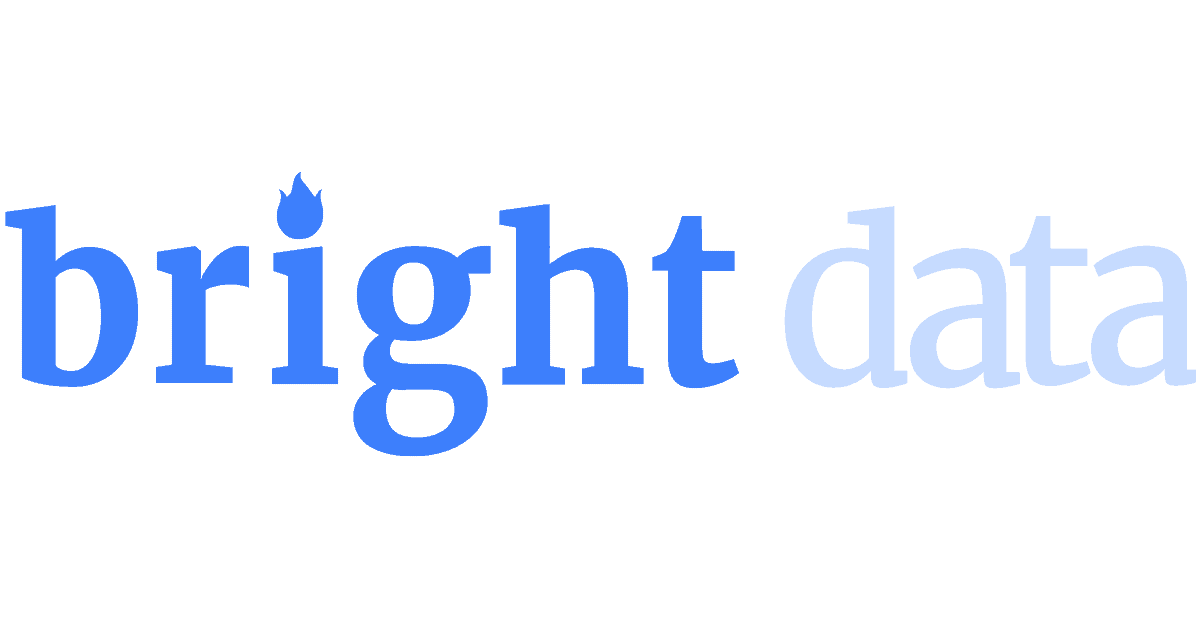Last Updated on August 12, 2025 by Ewen Finser
In the years I’ve spent assisting clients with data collection over various industries, I’ve discovered that success of a project can depend heavily on the right datacenter proxy infrastructure.
True, residential proxies get most attention these days for their stealth capabilities, but datacenter proxies remain the workhorse for most speed-critical operations, high-volume scraping, and most importantly cost-effective scaling.
After all, datacenter proxies operate from dedicated server farms with fiber optic connections. This means that they can deliver incredibly fast response times, with uncapped bandwidth.
What are Datacenter Proxies?
As most people who’ve engaged in data collection projects know, there are many different types of proxy servers.
Datacenter proxies are just that: IP addresses hosted on servers based in datacenters, not residential Internet connections.
I’ve found the best way to understand the difference between datacenter and residential proxy servers is that they’re built for performance, not anonymity. That means they’re a perfect choice if you need reliability and speed more than stealth. For instance, I’ve assisted clients to use datacenter proxies for ad verification campaigns, as well as price monitoring across e-commerce platforms.
Whenever I need to grab structured web data, real-time or historical, I use Bright Data. It makes it easy to pull info from public websites at scale, and it fits right into whatever AI model or workflow I’m working on. Fast, flexible, and super reliable.
Bottom Line Up Front
I’ve already said that datacenter proxies are ultra efficient and can save time, so allow me to extend you the same courtesy.
Based on the dozens of data collection projects I’ve worked on with various clients I can safely say that Bright Data has delivered the most consistent and reliable datacenter proxy infrastructure for enterprise scale projects.
It has over 770,000 datacenter proxies in 98 locations around the world, plus there’s a 99.99% uptime guarantee.
Latency is also excellent with average response times of 0.24 seconds. I was able to confirm this: firstly through independent benchmarks from platforms like AI Multiple then when I helped clients run their own tests.
Make no mistake, Bright Data is a premium provider and that’s reflected in its pricing. Still, I’ve found the platform’s reliability, comprehensive global coverage, and support for enterprise-level operations definitely justify the investment.
Best Datacenter Proxies
1. Bright Data
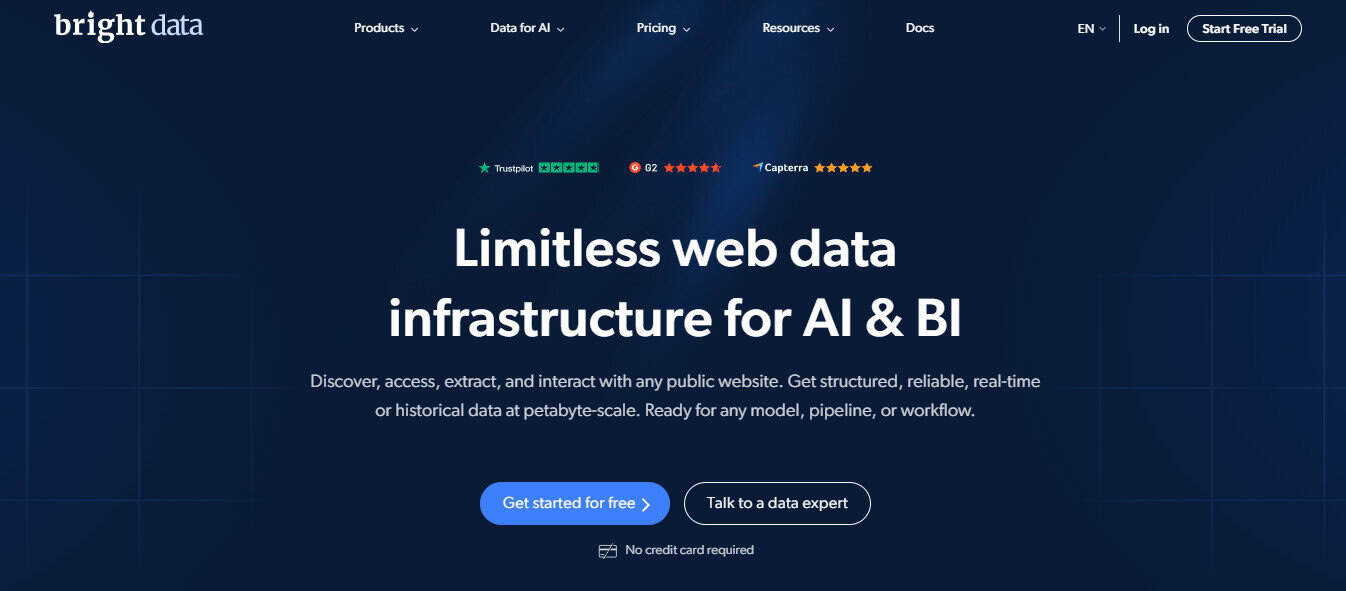
As you’ll have seen from my ringing endorsement above, of all the providers I’ve used I’ve found that Bright Data offers the most comprehensive datacenter proxy infrastructure, with over 770,000 IPs distributed across 98 countries.
The platform also offers three distinct datacenter proxy configurations: shared (paid per GB), shared unlimited (paid per IP), and dedicated unlimited (also paid per IP). Prices start from $14 per month for 10 shared IPs, or 60 cents per GB on a pay as you go basis.
Though I encourage you to visit the pricing page for itself, despite being a premium provider Bright Data can offer serious value for money for enterprise-level operations.
For instance, you can reduce your PAYG rate per GB to just 42 cents if you’re willing to pay $1,999 per month. This also includes a staggering 5 TB of traffic, making it suitable for most large scale projects.
The shared datacenter proxy pool consists of around 40,000 rotating proxies. It also allows you to select specific country IPs to assign. One feature I really like is ‘automatic failover’. This means if the platform can’t reach the proxy peer for your request it’ll automatically be rerouted to another.
Bright Data also offers a premium SLA with unlimited scale, unlimited seats, and 24/7 technical support, which I’ve found makes it perfect for enterprise-level operations.
2. Oxylabs
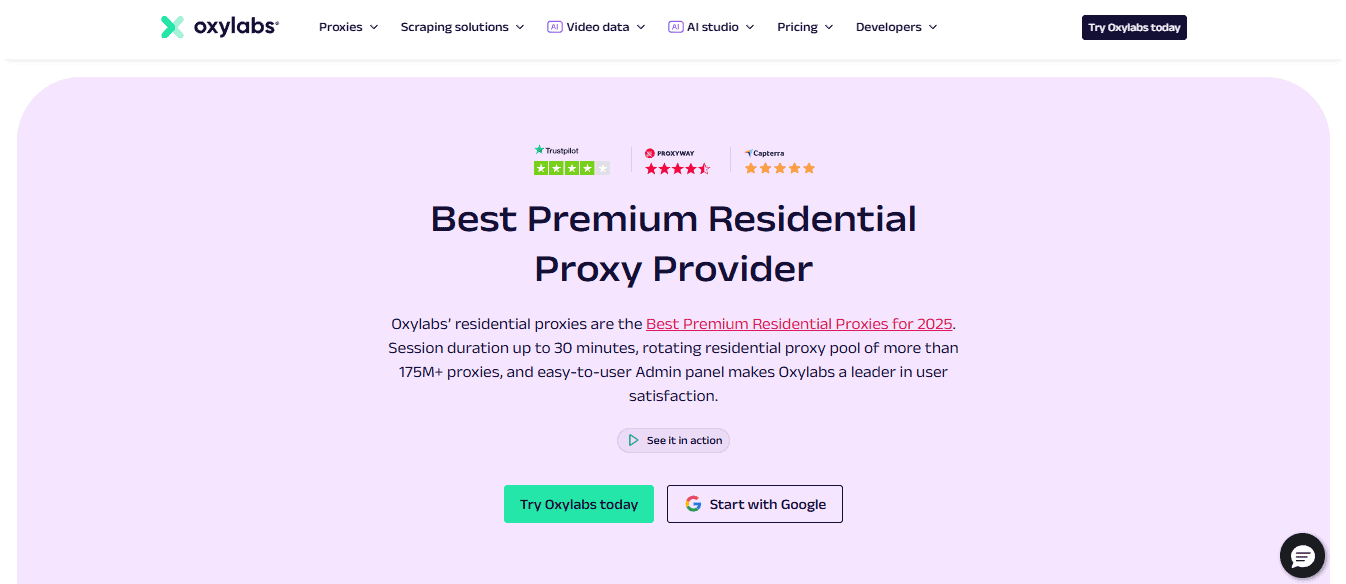
Like Bright Data, Oxylabs offers a premium datacenter proxy infrastructure with over two million datacenter proxies.
The platform offers both shared and dedicated proxy pools.
The number of locations you choose will depend on your specific configuration. For example, if you choose the dedicated ‘self-service’ datacenter proxy plan (paid per IP), you can deploy country-level geotargeting in eight different locations. If you sign up for the ‘Enterprise’ plan (over 3,000 IPs) this jumps to 188 countries with the option of city and state geo targeting.
If you just want to test the platform you can sign up for 5 IPs free of charge, with no credit card required.
Oxylabs’ main strength is assisting large-scale operations through automated proxy management. It does this through the OxyCopilot AI system. You can input natural language prompts into this to create scraping code, configure optimal datacenter proxy settings and even optimize IP rotation patterns based real-time analysis of target website behaviors.
Overall claims users have unlimited traffic, though I found that in practice a fair usage policy applies of 100 GB per IP, per month.
3. Webshare
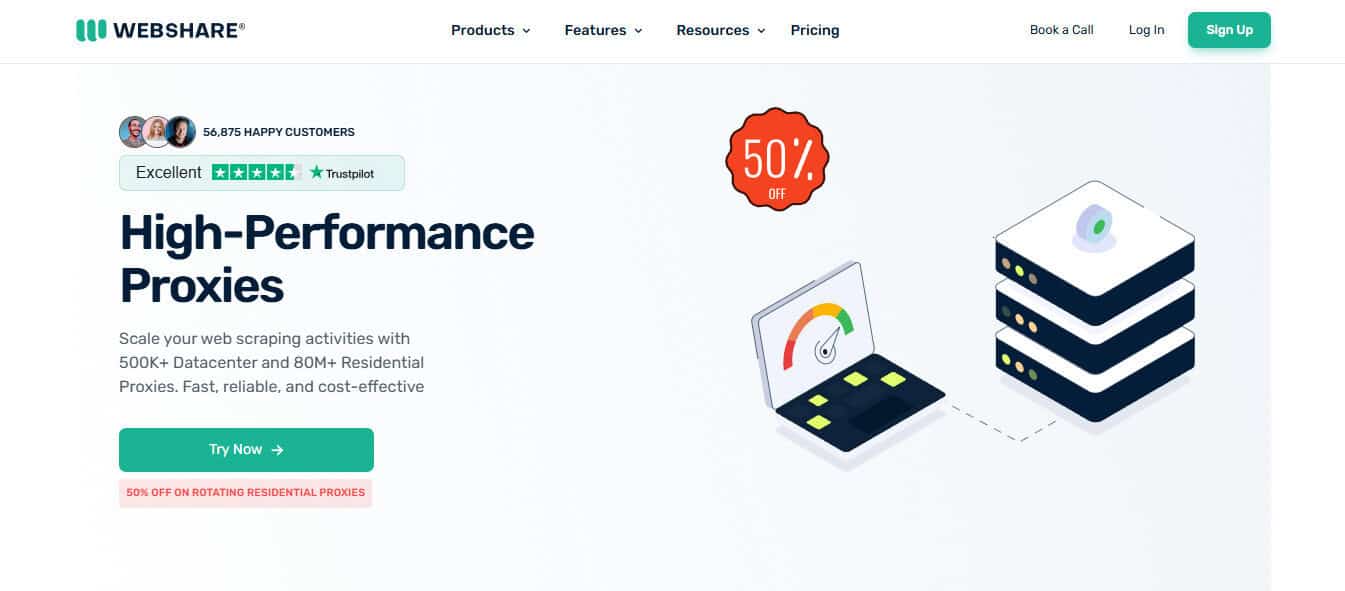
This provider’s offering is more modest than either Bright Data or Oxylabs with 400,000 datacenter proxies across 50 countries. It has a very respectable uptime of 99.97%.
Nevertheless, it offers flexibility and affordability so I’ve found it a reliable choice for small to medium scale data collection operations.
The platform offers three datacenter proxy types: shared (with multiple users), private (shared with 1-2 users), and dedicated.
Just as with its parent company Oxylabs there’s a free tier, offering up to 10 proxies. After that, prices start at $1.99 per month for 100 proxies, provided you’re willing to pay for the whole year at once.
Webshare’s datacenter proxies support HTTP and SOCKS5, as well as automatic protocol detection and seamless switching. You can also configure session durations – anything from five minutes to one month.
Success rates are lower than premium providers, at around 95% but Webshare’s infrastructure is suitable for most small business applications.
4. NetNut
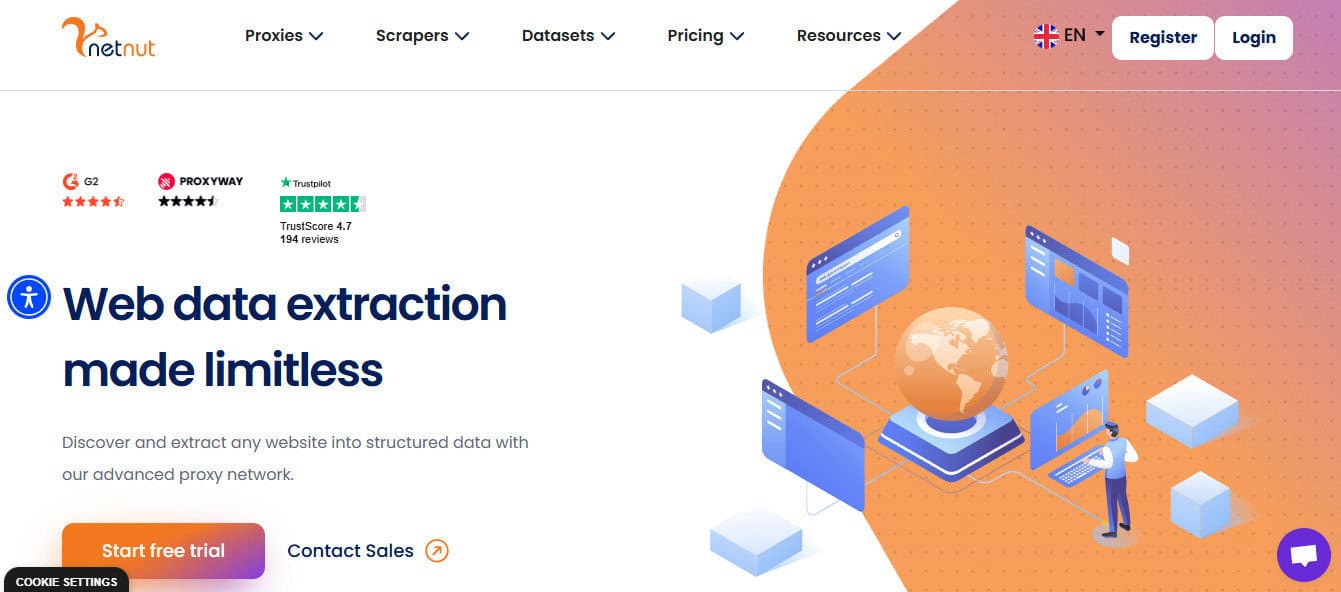
This platform has a unique approach to datacenter proxy services through its Direct ISP connectivity model.
Most traditional providers rely on standard data infrastructure, but NetNut has partnered with over 100 ISPs around the world to provide one-hop connectivity. I’ve found this can really improve performance due to reduced latency.
NetNut has a pool of over 150,000 datacenter IPs worldwide, and coverage is particularly good in North America, Europe, and Asia.
Independent benchmarks from the likes of ProxyWay and TechRadar consistently rank the platform as one of the fastest datacenter proxy providers, which has been my experience too.
I was reluctant to try it out at first due to reports of disconnects and dropouts I saw on sites like G2, but had no such issues when I availed of the free trial. The lowest cost ‘Starter’ plan is just $1/GB, billed at $100 per month. All plans include city and state selection, IP whitelists, API access, and a dedicated account manager. The platform also supports unlimited concurrent connections.
Despite the occasional comments I found about intermittent issues, NetNut’s direct ISP connectivity actually means the platform experiences almost no fail rates. It also supports both HTTP and SOCKS5 protocols with automatic session rotation and sticky session options.
5. IPRoyal
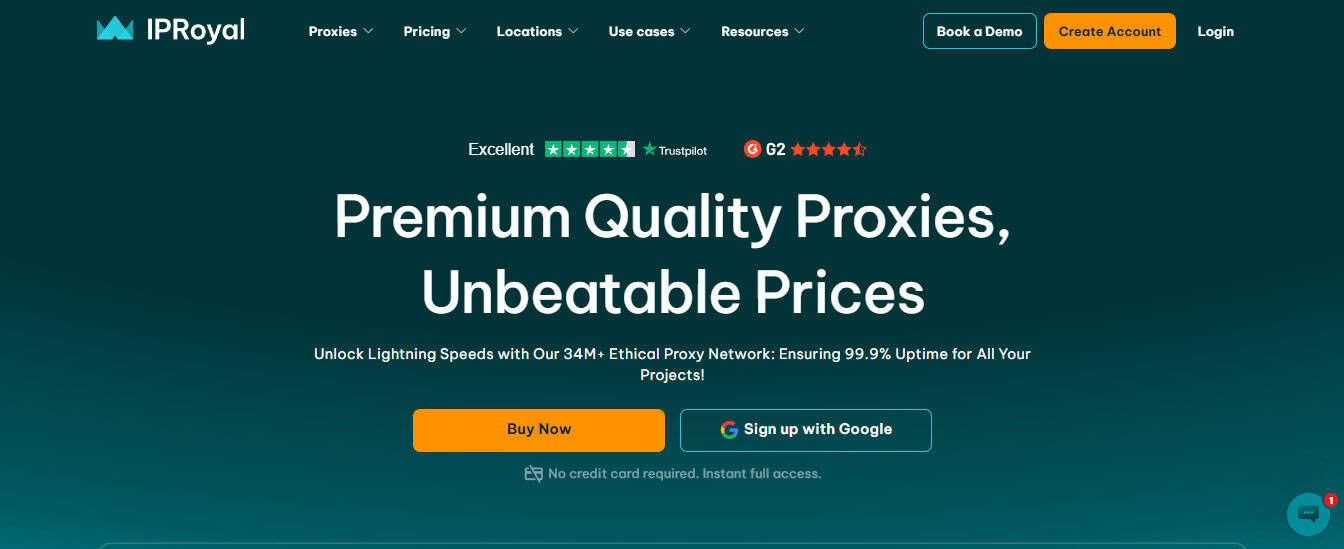
I’ve found this particular datacenter proxy provider offers a good balance between pricing, affordability, and global reach (63 different locations when I last checked). I’ve used IPRoyal for several clients who wanted reliable, dedicated proxies without paying enterprise-level pricing.
Its proxies support HTTP, HTTPS, and SOCKS5. All plans also include unlimited bandwidth and crucially you don’t have to share your IPs with anyone else. Prices start at $1.39 per proxy every 90 days.
Despite the low pricing, I found that IPRoyal delivers consistent speeds and low latency. It also lives up to its guarantee of 99.9% uptime.
If you’re running a project that requires granular geographic control, the platform also offers state and city-level targeting in select locations. In my experience that’s a very rare perk at this price point.
Sadly there’s no free trial, but the main dashboard is intuitive so it’s easy enough to sign up for a handful of proxies then add more as you become more comfortable with the interface. I’ve used the 24/7 chat for support previously to resolve a billing issue, and found IPRoyal’s account manager to be very responsive.
How to Choose the Best Datacenter Proxies
When it comes to choosing datacenter proxies, in general terms you need to consider your technical requirements, performance metrics and any operational constraints.
Based upon my experience of working on data collection projects that specifically require datacenter proxies, my best advice is:
Assess Your IP Pool Size and Geographic Distribution
If you’re seriously considering using datacenter proxies for your project it’s likely that you’re already planning a large scale operation.
This typically requires hundreds of thousands of IPs across multiple countries. However, if your operation is smaller in scope you may succeed with tens of thousands of IPs in specific locations.
Regardless of your project scale, you should always examine your chosen provider’s subnet diversity. I’ve found that services with broader subnet distribution are much less likely to face the kind of blanket IP bans that can stop an operation dead in its tracks.
The best providers also offer ASN (Autonomous System Number) targeting for datacenter proxies, allowing you to configure connections to appear to be from a specific ISP or region. This can make it harder for sites to identify datacenter proxy traffic and optimise routing.
Analyze Pricing Models and True Cost

Most providers will list prices on their website, but you need to look beyond this to the total cost of ownership.
For instance, I’ve had clients before who were lured in by apparently reasonable per GB rates, only to find that the provider charged extra for geo-targeting, domain access, or a certain number of concurrent connections.
If you have a high-volume, low frequency operation you’ll probably get better value for money by paying on a per IP basis. If your project is more focused on intensive scraping operations with more limited IP requirements, bandwidth-based pricing might work better.
Consider Dedicated Versus Shared Options
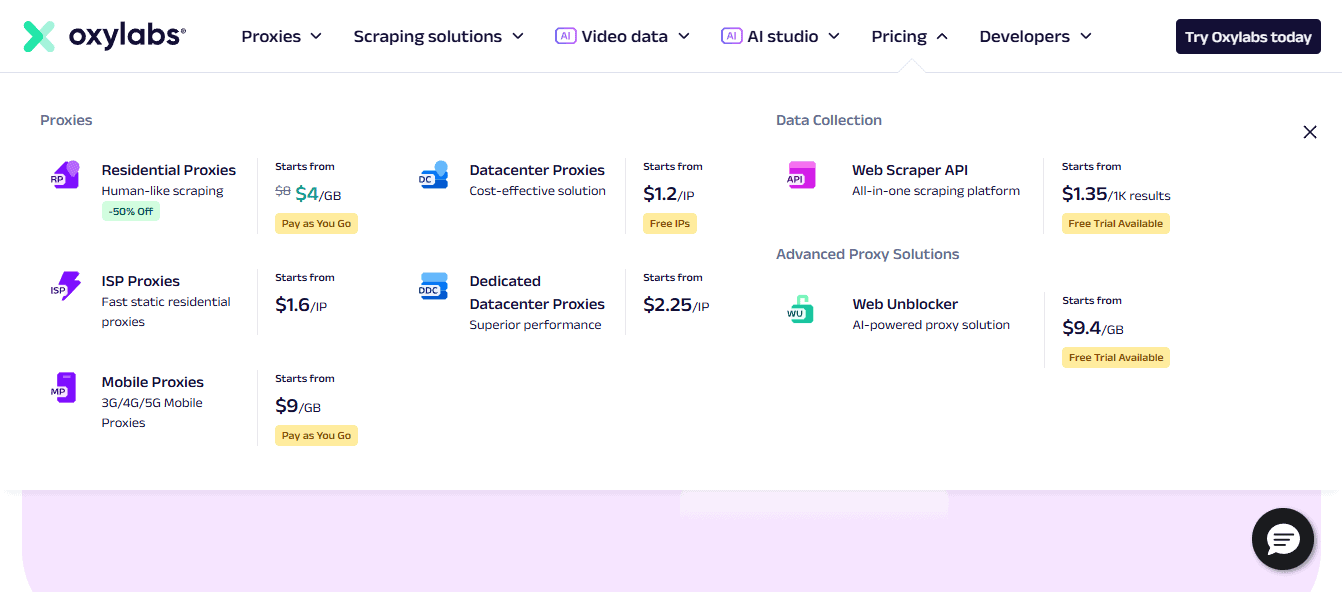
This is a factor you need to consider carefully when planning your data collection project. I’ve consulted with clients, for instance, who wanted the full control and consistent performance that comes with having a fleet of dedicated datacenter proxies but who hadn’t appreciated this comes at an extra cost.
Shared datacenter proxies can be a good alternative, but you’ll need to consider your operational needs given that performance will vary based on other user’s activities.
Some providers, like Oxylabs, offer semi-dedicated datacenter proxies by IP (in this case for up to 3 users). I’ve found this to be an excellent compromise for clients who need reliable performance without paying premium rates.
Common Mistakes When Choosing Datacenter Proxy Providers
Making the right choice when it comes to datacenter proxies can boost your success rates and keep operational costs down. Based on mine and my clients’ experience, typical traps to avoid include:
Prioritizing Advertised Pool Size Over Quality
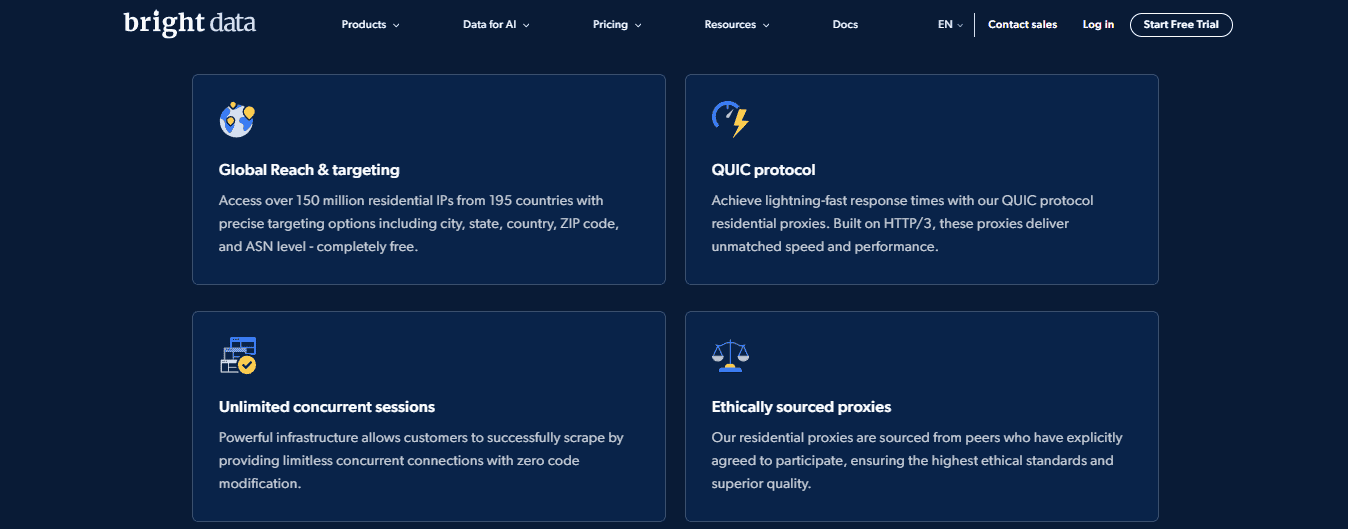
As I work in tech, I know this is a particularly serious concern for datacenter proxies. After all, anyone with access to a server can set up any number of virtual proxies with IP addresses.
This means headline pool numbers as advertised on a provider’s website aren’t necessarily meaningful.
True indicators of IP quality include rotation frequency, subnet diversity, and response time consistency.
One of the reasons I’m such a strong fan of Bright Data is that it makes it easier to monitor these factors by constant IP health monitoring. Any compromised addresses are also automatically deleted from pools. Make sure that your chosen provider does the same.
Ignoring Geographic Targeting Limitations
This is another factor you need to consider carefully if you’ve chosen datacenter proxies for your project, as they usually offer country-level targeting rather than city-level precision.
I’ve had clients who have told me they prefer datacenter proxies due to lower costs, but then reveal that their project required precise geographic targeting of the kind you’re only likely to find with residential proxies. You can avoid repeating their mistake by accepting and understanding the geographic limitations of datacenter proxy servers.
Choosing the Right Datacenter Proxy
The ideal datacenter proxy provider offers a combination of fast speeds, reliable infrastructure, and good value for money.
I strongly feel that Bright Data is the best choice for enterprise-scale operations, as for those kinds of projects consistent performance and comprehensive global coverage are non-negotiable.
While I admit it isn’t the least expensive provider in terms of upfront costs, the fact that you get access to over 770,000 datacenter proxies with an average response time of under 0.24 seconds means you’re unlikely to maximize your revenue with high success rates. I’ve found it more than pays for itself.
Whenever I need to grab structured web data, real-time or historical, I use Bright Data. It makes it easy to pull info from public websites at scale, and it fits right into whatever AI model or workflow I’m working on. Fast, flexible, and super reliable.
Still, the correct datacenter proxy solution will always depend on your specific technical requirements, budget, and operational realities.
For instance, Oxylabs is a good choice for larger businesses that want to make use of its AI-powered tools, particularly for larger projects that require regular reconfiguration of proxies. The platform also has excellent support for advanced geographic targeting.
Webshare’s a solid option for business or projects on a budget, given that there’s a free tier and clear pricing models. The provider also offers a very high uptime (99.97%), making it a reliable choice if your business is testing datacenter proxy solutions.
Whatever provider you choose, remember the main advantage of leveraging datacenter proxies is that you can collect the right data efficiently, consistently, and cost-effectively.


